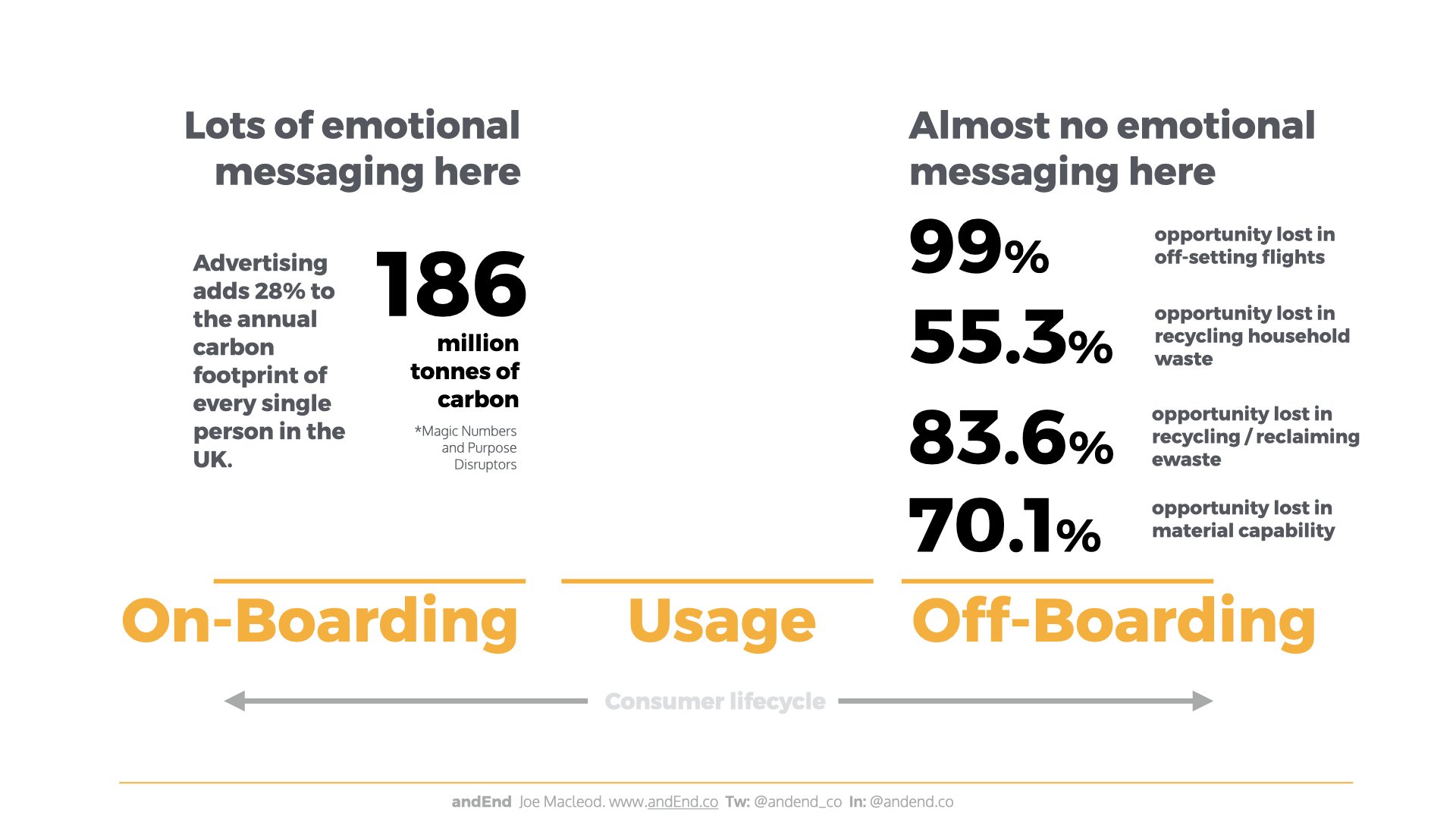

The rabbit hole is endless scroll. There are no bunnies at the bottom, just more hole.
There is something poetically appropriate about endless scroll and its role in consumption. Where other versions of consumerism have certainly aimed for an infinite delivery of a product or services to the consumer. None have succeeded to balance the content so well with the distribution method. Endless Scroll is the High-fructose corn syrup of your social brain, served through lit screen until your battery dies or you emotionally break under the strain of FOMO.

You can’t do don’t. Endineering your EPR
Extended Producer Responsibilities (EPR) is an environmental regulation that came in to force in France and Germany in 2022 and will probably be rolled out elsewhere. It places the responsibility on producers for the entire lifecycle of the product including waste collection and recycling. 1
Pardon me while I yawn and imagine another meaningless symbol on some packaging. Imagining another invisible back door logistical solution. And imagine millions of confused consumers, who just want to do the right thing. Is EPR going to be a consumer experience? Will it be actionable by the consumer?

Sustainable product? Until purchase, or the end?
Where does your sustainable purchase end up? Who cares if you bought a sustainable product from a sustainable company? What happens after doesn’t matter.
Wrong.

Digital transformation is half done
Many companies are wrangling their businesses on to a digital footing. Some have failed and gone under. Successful ones are celebrating their new found efficiencies, smoothness of customer sign up and integrated logistics. What is common amongst all of them is the sparse attention placed on the end of the customer experience. Why is this a problem?

There is a recession coming. How will you say goodbye when people can’t stay?
The coming recession will mean a lot of people leaving. Your business might be one of the expenses that people can’t afford. How you say goodbye to these people will say a lot about your business, it’s morals, and might even influence how well you recover after the recession?

How bad am I? Anonymity at the end.
The beginning is layered in complex, data driven, celebratory reinforcement, that embeds individual consumer privilege – “Thank you for purchasing, [insertNAME] are a valued customer!”.
At the end consequences are relinquished from the consumer and left for a faceless, faraway victim to endure. This has left consumers experiencing indifference about their personal role in the worlds biggest pollution problems.

Measurement at the end.
If we can’t measure, we can’t improve.
How will consumers improve their impact without knowing how well they are doing? Measuring impact will become one of the biggest consumer experience issues of the next decade.

Numi. Take-back at end of product life
Numi occupies a key part of the consumer lifecycle that is missing in many businesses circular strategies - how you get products back at the end. I sat down with Andrea Schneller in August and discussed the story of the Numi business.

Action, action, deadend.
Casually, while brushing your teeth in the bathroom, look at the information on the products around you and what it says for different stages of the consumer journey.
On-boarding and usage stages are usually clear, inspiring and actionable for the consumer.
Off-boarding can be a baffling mess of information about material identity, corporate allegiances, indecipherable symbols and un-actionable statements.

After death deletion.
One of the very early starting points of my journey on the endings road was hearing a story from a friend about the impossibility of leaving a service when a person dies.

LOST OPPORTUNITY at the end.
Advertising adds the emotional encouragement that makes us want to purchase at the beginning of the consumer lifecycle. And consequentially impact the environment. Can we use this same argument to measure the lack of emotional engagement at the end of the consumer lifecycle to show the missed opportunity?

A massive example of a lingering ending - ewaste in your home.
Engagement with consumers at the end helps in off-boarding old products people are hoarding, or don’t know how to dispose of. One of the largest growth sectors in US real estate is off-site storage. E-waste – old phones, TVs, computers, etc - is becoming a significant part of this pile of old products. These linger around in our homes, filling up cupboards without the benefit of instructions or destination for disposal. In the US only 17.4 per cent of 2019’s e-waste was collected and recycled. These were recoverable materials, valued conservatively at US $57 billion.
